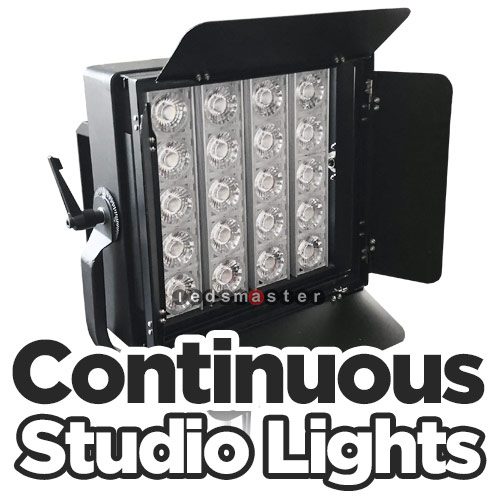Conversion method
Some EL lamp users specify the brightness output they need, but they don’t seem to all use the same unit. How to convert between cd/m2 (candlelight/square meter), lux and FL (foot-lamberts)?
- When a light source shines on an object, we can measure which is the light source (luminance) or which is reflected by the object (illuminance).
- The illuminance depends on the reflection characteristics of the object, it is very similar to a photo, it only measures the reflected light, and the general unit is lux.
- However, the EL lamp is a light source, it should be identified by the unit of brightness, namely fL (foot Lambertian) or cd/m2, also called nits. Some engineers prefer to use fL, while the International Standards Organization often uses nits. The conversion formula of nits and fL is: 1 nits x 0.2919 = 1 fL, or 1 fL x 3.426 = 1 nits. These factors are derived from pi(π) and m2/ft2 *(0.0929).
- Obviously, using lux is an incorrect unit, and lux cannot be converted to other units. 1lux = 1 lumen per square meter=0.0929 foot candle. 1 foot candle = 1 lumen per square foot = 10.764 lux. 1 fL = 3.426 candelas per square meter (nit). 1 nit (candelas per square meter) = 0.2919 foot Lamberts.
Luminous flux
Luminous flux is the rate of light energy emitted by a light source or the flow rate of light. It is the basic quantity that describes the luminous ability of the light source. The unit is lumens. For example, a 100W incandescent bulb can emit 1750lm. Bright, and a 40W cool white fluorescent tube can emit 3200lm luminous flux. By definition, 1lm is the luminous flux emitted by a uniform point light source with a luminous intensity of 1cd within a solid angle of 1 steradian.
light intensity
Luminous intensity (Candle power) refers to the luminous flux emitted from a solid angle of the light source (unit is sr), that is, the distribution density of the luminous flux emitted by the light source or lamp in the selected direction in space, the unit is candle or Candela, Referred to as cd. A light source with a luminous intensity of 1 cd can emit a luminous flux of 12.57lm.
Luminance:
The density of luminous flux received on the illuminated plane, which can be measured by the luminous flux per unit area. The luminous flux of 1lm is evenly distributed on an area of 1 square meter to produce an illuminance of 1lux. The luminous flux of 1lm illuminates an area of 1 square foot, and its illuminance value is 1 footcandle, referred to as Fc.
Luminance or Brightness
When human eyes see the light of an object, it can be expressed in two ways: one is used for objects with higher luminous value, such as light sources or lamps, directly expressed by its luminous intensity, and the second is used for itself Objects that do not emit light but only reflect light, such as indoor surfaces or general objects, are represented by brightness. Brightness is the luminous intensity emitted or reflected in a certain direction per unit area of the illuminated object. It is used to show the difference between light and darkness of the illuminated object. The metric unit is cd/m2, or nit, and the imperial unit is foot lambert (fL).
Reflectance or reflection factor:
The brightness of a surface depends on the luminous flux falling on it and the ability of the surface to reflect light. The amount and distribution of the light that it can reflect depends on the nature of the surface, based on the ratio of reflected light to incident light. It is called the Reflectance or reflection factor (%) of the material surface. The reflectance of a perfect black surface is 0, that is, no matter how much light falls on its surface, there is no brightness and it is completely absorbed. On the contrary, the reflectance of a perfect white surface is 1 (the reflectance is 100% and the absorption is 0). To measure reflectance, first place the illuminance meter on the surface of the object and read the surface illuminance value Ei (Incident light), and then place the illuminance meter on it for 5-8cm (the photosensitive part faces the surface and no shadows are blocked). Measure the reflected illuminance Er (Reflected light). The surface illuminance divided by the reflected illuminance is the reflectance of the surface.
Some common units in the lighting field
Luminous flux, symbol, unit lumen, description: The sum of the light emitted by a luminous object per second is the luminous flux.
Light intensity, symbol I, unit cd, description: the luminous flux emitted by the luminous body in a unit solid angle in a specific direction.
Illuminance, symbol E, unit lux, lm/m2, description: the luminous flux of the luminous body illuminating the unit area of the illuminated object.
Brightness, symbol L, unit nits, cd/m2, description: the luminous flux emitted by the luminous body in a specific direction per unit solid angle per unit area.
Luminous efficiency, unit lm/w, description: The ability of an electric light source to convert electricity into light, expressed as the emitted luminous flux divided by the power consumption.
Explanation of Lux
Illumination is a physical quantity that indicates how well an object is illuminated. The illuminance is related to the illuminating light source, the illuminated surface and the position of the light source in space. The size is proportional to the light intensity of the light source and the cosine of the incident angle of the light, and inversely proportional to the square of the distance from the light source to the surface of the illuminated object. The illuminance can be used Illuminance meter directly measures. The unit of illuminance is lux, usually abbreviated as lx. When an object is uniformly illuminated by light, when the luminous flux obtained on an area of 1 square meter is 1lm, its illuminance is 1lux. Sometimes, as an example, the light source is fully utilized, and a reflection device is often attached to the light source to obtain more luminous flux in certain directions to increase the illuminance on the illuminated surface in this direction. For example, LED cameras, photography lights, flashlights and car headlights are all equipped with mirrors.
Various environmental illuminance values (Lux)
Dark night: 0.001~0.02
Moonlit night: 0.02~0.3
Cloudy indoor: 5~50
Cloudy outdoor: 50~3000
Office: 30~50
Sunny indoor: 100~1000
Sunrise and sunset: 300
Illumination under the sun at noon in summer: about 100000 lux
Illumination required when reading books: 50~60
Illumination required by TV studio: 300~2000
Minimum illumination required for home video cameras: 0.3~1
Standard Illumination of Home Camera: 1400
Illuminance is a unit that reflects the intensity of light, and its physical meaning is the luminous flux irradiated on a unit area. The unit is the number of lumens per square meter, also called lux, 1 lux=1 lm/m2. Among them, lm is the unit of luminous flux, which is defined as the light radiated by pure platinum at the melting temperature (about 1770°C), with a surface area of 1/60 square meters in a solid angle of 1 steradian. In order to have a perceptual understanding of the illuminance, the following example calculations, a 100W incandescent lamp, the total luminous flux emitted by it is 1200lm, if it is assumed that the luminous flux is evenly distributed on the hemispherical surface, the illuminance values of 1m and 5m from the light source can be respectively The following steps are calculated: the area of the hemisphere with a radius of 1m is 6.28㎡, and the illuminance value at 1m from the light source is: 1200lm/6.28㎡=191 lux. Similarly, the area of the hemisphere with a radius of 5m is 157㎡, and the illuminance value at 5m from the light source is: 1200lm/157㎡=7.64 lux.
The following is an example calculation for floodlights:
10 lamps x 25500 (the luminous flux of each lamp) = 255000 x 80% (80% of the light is projected onto a plane) = 204000/2.6 (the area of the lamp, square meters) = 92307*40% (light extraction rate) =36920 lux.






